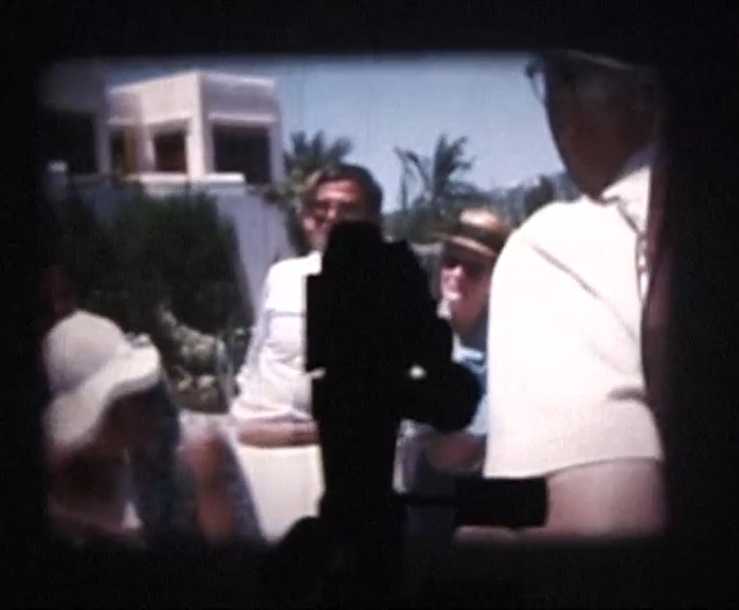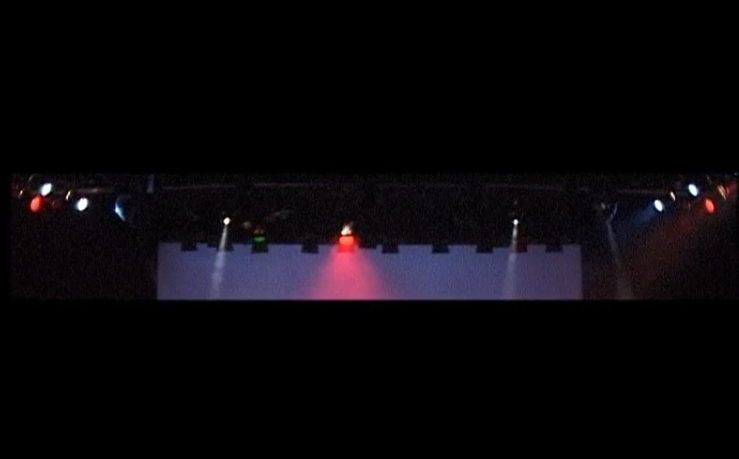Platon's Mirror
In his work Platon´s Mirror, Mischa Kuball shows us Plato´s Allegory of the Cave. An unfurled sheet of plastic serves as a projection surface. The light falls on it from the front and is reflected by the motion of the plastic surface, which creates amorphous planes structured by the folds of the sheet. A horizontal line, among other things, arouses associations of a landscape. The folds in the upper third of the projection surface look like rays, so that the image of a sun is formed, which, according to Plato, stands for good.
As in the allegory, it is possible to perceive reflected images of human figures passing by. Colorful planes, contours, and shapes are created, fade, and transform in different rhythms on a surface whose overall unity is broken up into three small parts on the left. The projection is not tangible; the depiction cannot be related to anything being depicted; the shadow plays cannot be interpreted in any specific, concrete way. What is seen are images of reality, mirror images – as the title already implies. Significantly, it is the reflective medium of video that causes them to occur. Hence this is a double-edged parody of twentieth-century theories of perception, whose origins are in the dualism propounded in ancient Greece. This is a dialectic, visual demonstration of media crtique, the aesthetics of reception, and the pseudo-reality of media. (Pia Damm)
About the video
About the artist
- 1959 in Düsseldorf, GER.
Studied at FH Düsseldorf, GER, and the Freien Universität Berlin, GER


